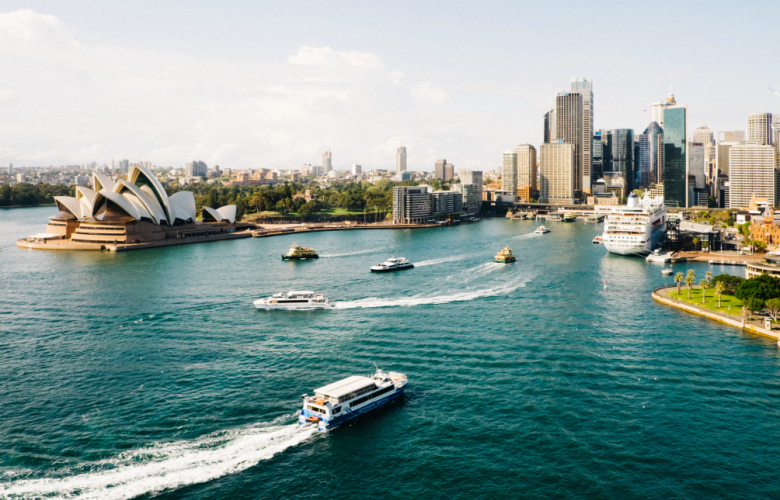Scarcity sees Sydney five-star hotel room values soar Michael Simpson Savills Hotels
Contact
Scarcity sees Sydney five-star hotel room values soar Michael Simpson Savills Hotels
The rarer a commodity the higher its price. Strong investor demand combined with a lack of stock, very limited supply growth and sustained outperformance have created a perfect storm for Sydney’s five-star hotel market, according to Savills Hotels.
Michael Simpson, Managing Director of Savills Hotels told The Hotel Conversation that, “The old metrics no longer apply.”
“Sydney five-star CBD properties have been by far the strongest performer across the Australian hotel market for the past few years and there are extremely limited opportunities to get a piece of the action.”
As a result, Simpson says Savills Hotels now believes that the next sale of a luxury property in the Sydney CBD could see investment yields fall below 5% and the per room price well exceed $1 million.
Analysis of key sales results over the past five years – a period when there were just a handful of transactions - shows how dramatically the value of Sydney’s five-star hotels has escalated in recent times.
Old metrics still applied in 2013 when the Four Seasons Sydney went on the market, eventually selling for $340 million at $606,000 a room on a relatively high yield of 6.6%.
At that point the cash rate was 2.5% and the international inbound tourism surge had just begun.
In transaction terms the game changed the following November, 2014, when there was intense competition for the 557-room freehold Sheraton on the Park.
A Chinese investor emerged as the successful bidder, paying an Australian record total price of $463 million for the landmark property, which came with an obligation to spend a further $40m on property improvement capex.
That total equated to more than $900,000 a room, almost 40% more than the Four Seasons had sold for just 14 months earlier.
“The Sheraton on the Park result really created a stir – some people at the time thought it was an overly aggressive price, but history now shows it was an astute purchase,” Simpson says.
This was vividly illustrated with the sale of the Westin Sydney a few months later when the mythical million-dollar barrier on a large format five-star property was cleared for the first time in Sydney with the buyer paying $445m: $1.07 million a room.
A new benchmark had been set but perhaps more importantly the Westin sale was crucial in demonstrating what an incredible investment a Sydney CBD five-star can be.
The seller, GIC, the Singapore sovereign wealth fund, bought the Westin in 2002 for just $160m, meaning that on the sale price of $445m its investment had returned 21% a year based on capital appreciation alone.
Obviously GIC also enjoyed strong income during its holding period.
Simpson believes these seemingly high prices were more than justified given the high level of revenue and profitability that a well-run five-star property can generate in the right hands and says even since 2015 operating metrics have improved significantly.
“The cash rate for example has fallen from 2.5% to 1.5% and Sydney five-star occupancies are regularly 90% or above,” Simpson says.
“For the six months to June 2018, STR recorded market-wide luxury daily rates at just under $370, though a select group of high-end properties routinely achieve average rates of more than $400 a night.
“While margins vary according to the hotel operator, we estimate that the average net profit per room for the top Sydney CBD five-star hotels, including food and beverage profit, is more than $55,000 a year.”
He says on this basis a five-star Sydney hotel bought for $1 million a room would generate a net operating yield of at least 5.5%.
“However, I think if a quality property did come onto the market that $1 million a room would simply be a starting point, as performance for a well-positioned, new luxury property would materially exceed $55,000 a room,” says Simpson.
“Our view is that, given the historical scarcity of central Sydney five-star product and long-term market outperformance, purchase yields could tighten to 4.75% or even 4.5%, pushing the price per room to well above $1 million mark.”
He adds, “Sydney is the hotel investment market’s version of a high growth stock – high barriers to entry, low supply growth, consistent domestic and international demand and consistently improving earnings.
“That’s why investors are prepared to pay higher ‘price to earnings’ multiples.”
Even at these higher price metrics, Simpson says Sydney five-star hotels still represent an excellent long-term investment opportunity.
“History shows that Sydney five-star hotels are a blue-chip investment and reward those with a long-term perspective. It’s like Mayfair on the Monopoly board – the cost of entry is very high but more than justified by the returns.”
To discuss the hotel market in further detail, phone or email Michael Simpson via the below contact details.
See also:
New luxury hotel possible with Sydney's Sirius Building for sale
$150m Four Points by Sheraton hotel Sydney Central Park officially opens
$120m Little National Hotel Sydney Wynyard Station approved for Doma Group







